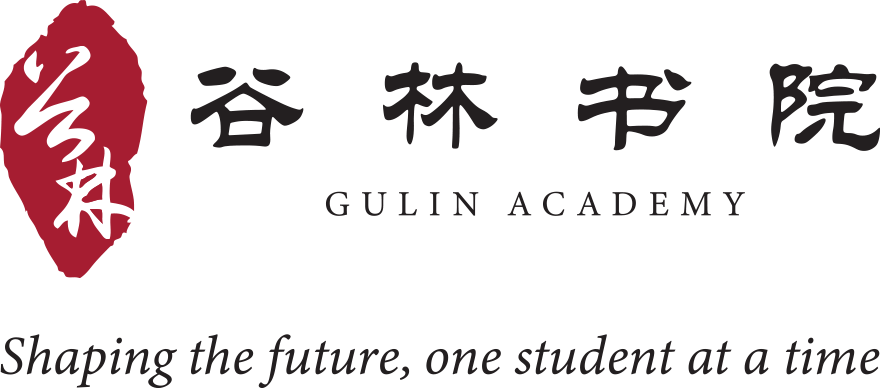Breakdown of Massachusetts Universities
Massachusetts, a hub of educational excellence, offers an extraordinary array of universities and colleges, each with unique opportunities catering to diverse academic and professional aspirations.
For Chinese parents exploring options abroad, understanding the nuanced strengths, international appeal, and career outcomes of these institutions can provide invaluable insight into their children’s futures.
Prestigious Research Universities
Harvard University (Cambridge, MA)
- Undergraduate Population: 7,153
- % International Students: 22.9%
- Acceptance Rate: 4%
- Most Popular Majors: Economics, Computer Science, Political Science
Harvard, one of the world’s most prestigious universities, offers a rich liberal arts education and excels in diverse disciplines like social sciences (25%) and biological sciences (20%). Known for its rigorous academic culture, the university is globally recognized for producing leaders in business, law, and academia. With a 90% employment rate within six months of graduation, its international student body is growing.
Harvard University continues to be a leader in higher education, maintaining its position among the top institutions globally. The university offers a student-faculty ratio of 7:1, ensuring personalized attention and mentorship opportunities for its undergraduates. Harvard’s commitment to providing a comprehensive educational experience remains steadfast, attracting students worldwide.
Massachusetts Institute of Technology (MIT) (Cambridge, MA)
- Undergraduate Population: 4,361
- % International Students: Data not available
- Acceptance Rate: 4%
- Most Popular Majors: Computer Science, Engineering, Mathematics
MIT stands as a leader in engineering, technology, and innovation. About 60% of MIT students pursue engineering degrees, while 20% focus on natural sciences. Its rigorous academic focus, coupled with a hands-on approach to learning, makes MIT a top choice for students seeking careers in tech, entrepreneurship, and research. The institution’s international enrollment is significant, especially from China, with 95% of graduates securing employment within three months, often at leading tech firms.
MIT is set to begin the demolition of certain buildings in Kendall Square in early 2025 as part of its ongoing campus development plan. This initiative aims to enhance research facilities and foster innovation within the community. The institute’s focus on cutting-edge advancements continues to attract top-tier students and faculty.
Liberal Arts and Smaller Colleges
Amherst College (Amherst, MA)
- Undergraduate Population: 1,971
- % International Students: 10.2%
- Acceptance Rate: 9%
- Most Popular Majors: Economics, Mathematics, Political Science
Amherst is a top liberal arts college offering an open curriculum, allowing students to tailor their studies and explore a broad range of subjects. Known for its small class sizes and collaborative environment, 35% of students major in social sciences, and 25% in humanities. With a focus on interdisciplinary learning, Amherst fosters intellectual freedom and curiosity, leading to a 91% employment rate within six months of graduation. Many graduates go into public policy, academia, and nonprofit work.
Amherst College boasts a low student-faculty ratio of 7:1, allowing for intimate class settings and close interactions with professors. This environment fosters a collaborative learning experience, enabling students to engage deeply with their studies and pursue interdisciplinary interests.
Williams College (Williamstown, MA)
- Undergraduate Population: 2,224
- % International Students: 8.5%
- Acceptance Rate: 9%
- Most Popular Majors: Economics, Political Science, Psychology
Williams is one of the nation’s top liberal arts colleges, renowned for its emphasis on arts and interdisciplinary studies. About 20% of its students major in the arts, with strong programs in visual arts, music, and theater. With a highly collaborative culture and a student-to-faculty ratio of 7:1, students benefit from close faculty mentorship. A 92% employment rate within six months reflects the college’s robust connections in consulting, finance, creative industries, and academia.
Williams College is renowned for its tutorial-based learning approach, where students engage in small, discussion-driven classes. This pedagogical method promotes critical thinking and personalized education, contributing to its reputation as a leading liberal arts institution.
Wellesley College (Wellesley, MA)
- Undergraduate Population: 2,280
- % International Students: 13.5%
- Acceptance Rate: 14%
- Most Popular Majors: Economics, Political Science, Psychology
A premier women’s college, Wellesley offers rigorous academics paired with a vibrant campus life. With 10% international students and a strong focus on humanities, social sciences, and leadership, Wellesley fosters a diverse and inclusive environment. Its proximity to Boston enhances career opportunities, especially in areas like healthcare, education, and public service. Graduates enjoy an 89% employment rate, finding success in various sectors driven by the college’s commitment to cultivating future leaders.
Wellesley College offers a student-faculty ratio of 8:1, ensuring that students receive individualized attention in their academic pursuits. The college’s commitment to empowering women through education is reflected in its supportive and resource-rich environment.
Mount Holyoke College (South Hadley, MA)
- Undergraduate Population: 2,300
- % International Students: 26.3%
- Most Popular Majors: Psychology, Biology, International Relations
The first of the Seven Sisters, Mount Holyoke combines tradition with forward-thinking innovation. With a significant proportion of international students, the college offers a diverse and global perspective. It boasts strong programs in social sciences and humanities. A supportive and intellectually stimulating environment ensures graduates thrive in careers across business, education, and nonprofit sectors, contributing to the college’s 85% employment rate.
Mount Holyoke College is part of the Five College Consortium, allowing students to cross-register for courses at nearby institutions, including Amherst and Smith Colleges. This collaboration expands academic opportunities and fosters a diverse learning community.
Smith College (Northampton, MA)
- Undergraduate Population: 2,566
- Acceptance Rate: 23%
- Most Popular Majors: Psychology, Biology, Engineering
Smith College, known for its strong commitment to women’s education and diversity, offers a highly individualized academic experience. Students benefit from small class sizes and close mentorship. The college excels in the humanities and social sciences, with a focus on empowering students to lead in various fields. With an emphasis on diversity and inclusion, Smith graduates pursue careers in academia, business, and the arts, with an impressive alumni network supporting them in their professional journeys.
Smith College has recently enhanced its engineering program, emphasizing interdisciplinary approaches and real-world applications. The program’s growth reflects Smith’s dedication to integrating liberal arts education with STEM fields, preparing students for diverse career paths.
College of the Holy Cross (Worcester, MA)
- Undergraduate Population: 3,138
- % International Students: 3%
- Acceptance Rate: 36%
- Most Popular Majors: Economics, Political Science, Psychology
A Jesuit institution, Holy Cross offers a strong liberal arts education with a focus on social justice, ethics, and service. With 30% of students in social sciences and 25% in humanities, it fosters a well-rounded education with an emphasis on moral responsibility. Though its international student body is small, the college’s commitment to producing ethical leaders is reflected in the 89% employment rate, with graduates excelling in healthcare, public service, and education.
The College of the Holy Cross maintains a student-faculty ratio of 10:1, promoting close mentorship and academic support. The college’s Jesuit tradition emphasizes ethical leadership and service, cultivating a community focused on social responsibility.
Specialized and Larger Universities
Boston University (BU) (Boston, MA)
- Undergraduate Population: 2,576
- Acceptance Rate: 22%
- Most Popular Majors: Business Administration, Finance, Entrepreneurship
Boston University is a large, diverse university known for its strong programs in business, communications, and health professions. With 22% international students, BU offers a cosmopolitan campus life and robust career services. Graduates enjoy strong employment prospects, particularly in healthcare, business, and communications. BU’s location in Boston provides unparalleled access to internships and job opportunities, contributing to its 88% employment rate.
Boston University has been acknowledged among the top national universities, reflecting its comprehensive academic offerings and research initiatives. The university’s urban setting provides students with ample opportunities for internships and cultural experiences. Boston University is ranked highly among research institutions for Economics.
Babson College (Wellesley, MA)
- Undergraduate Population: 2,576
- % International Students: 28%
- Acceptance Rate: 22%
- Most Popular Majors: Business Administration, Finance, Entrepreneurship
Babson is widely regarded as the top institution for entrepreneurship and business education. The college’s Global Entrepreneurial Leadership Program offers hands-on experience in international markets, including partnerships with Chinese companies. With a focus on business leadership and innovation, Babson’s extensive alumni network and global connections contribute to its impressive 99% employment rate within six months of graduation.
Babson College continues to lead in entrepreneurship education, with its undergraduate program consistently ranked among the best. The college’s focus on entrepreneurial leadership equips students with the skills to innovate across various industries.
Berklee College of Music (Boston, MA)
- Undergraduate Population: 6,000
- % International Students: 25.3%
- Acceptance Rate: 50%
- Most Popular Majors: Music Performance, Music Production, Songwriting
Berklee is a leading institution for music education, offering programs in music performance, music business, and music production. With 28% of students coming from international backgrounds, including many from China, Berklee fosters a diverse and inclusive environment. Its global reach includes a campus in Valencia, Spain, further expanding opportunities for students to engage with the European music industry. Berklee’s strong industry ties lead to an 85% employment rate for graduates in performance, production, and music business.
Berklee College of Music has expanded its global presence through partnerships and online programs, offering students access to diverse musical traditions and contemporary practices. This initiative enhances Berklee’s commitment to fostering creativity and artistic excellence.
University of Massachusetts Amherst (UMass Amherst) (Amherst, MA)
- Undergraduate Population: 24,231
- % International Students: 10.6%
- Acceptance Rate: 64%
- Most Popular Majors: Business, Computer Science, Psychology
UMass Amherst, the flagship campus of the UMass system, offers a broad range of programs with a focus on business, social sciences, and engineering. Its diverse student body includes 8% international students. The university’s robust career services and alumni network ensure strong outcomes, with an 84% employment rate within six months of graduation, particularly in business and engineering fields.
Bentley University (Waltham, MA)
- Undergraduate Population: 4,061
- % International Students: 24%
- Acceptance Rate: 48%
- Most Popular Majors: Business, Accounting, Finance
Bentley focuses on business education and is known for its strong programs in accounting, finance, and marketing. The university emphasizes experiential learning, and its close ties to Boston’s business community offer students numerous internship and job opportunities. Bentley’s strong career services contribute to a high employment rate of 90% within six months of graduation.
Bentley University is recognized for its strong business curriculum, integrating technology and ethics into its programs. The university’s emphasis on experiential learning prepares students for dynamic careers in the global marketplace.
Northeastern University (Boston, MA)
- Undergraduate Population: 19,000
- % International Students: 20%
- Acceptance Rate: 18%
- Most Popular Majors: Business, Computer Science, Engineering
Renowned for its co-op program, Northeastern seamlessly integrates professional experience with academic learning, allowing students to graduate with up to 18 months of real-world work experience. With strengths in business, engineering, and computer science, the university attracts students who thrive in fast-paced, innovative environments. Its urban location fosters strong industry connections, particularly in Boston’s thriving tech and biotech sectors. Northeastern’s emphasis on global learning is reflected in its extensive study-abroad and experiential learning opportunities, preparing graduates to excel in competitive, international markets.
Tufts University (Medford, MA)
-
- Undergraduate Population: 6,877 students
- Percentage of International Students: 12%
- Acceptance Rate: 11.49
- Most Popular Majors: Computer Science, International Relations, Economics
Tufts balances a liberal arts foundation with cutting-edge research, making it a powerhouse for interdisciplinary education. The university is known for its internationally focused programs, particularly through the Fletcher School of Law and Diplomacy, one of the world’s most prestigious graduate schools in international affairs. With a strong tradition in civic engagement, Tufts produces graduates who excel in public policy, medicine, and technology. Its unique mascot, Jumbo the elephant, symbolizes the school’s quirky yet ambitious culture, where students are encouraged to think critically and make meaningful contributions to the world.
Tufts University offers a student-faculty ratio of 9:1, fostering an environment where students can engage closely with faculty members. The university’s emphasis on active citizenship and global perspectives prepares students to address complex societal challenges.


